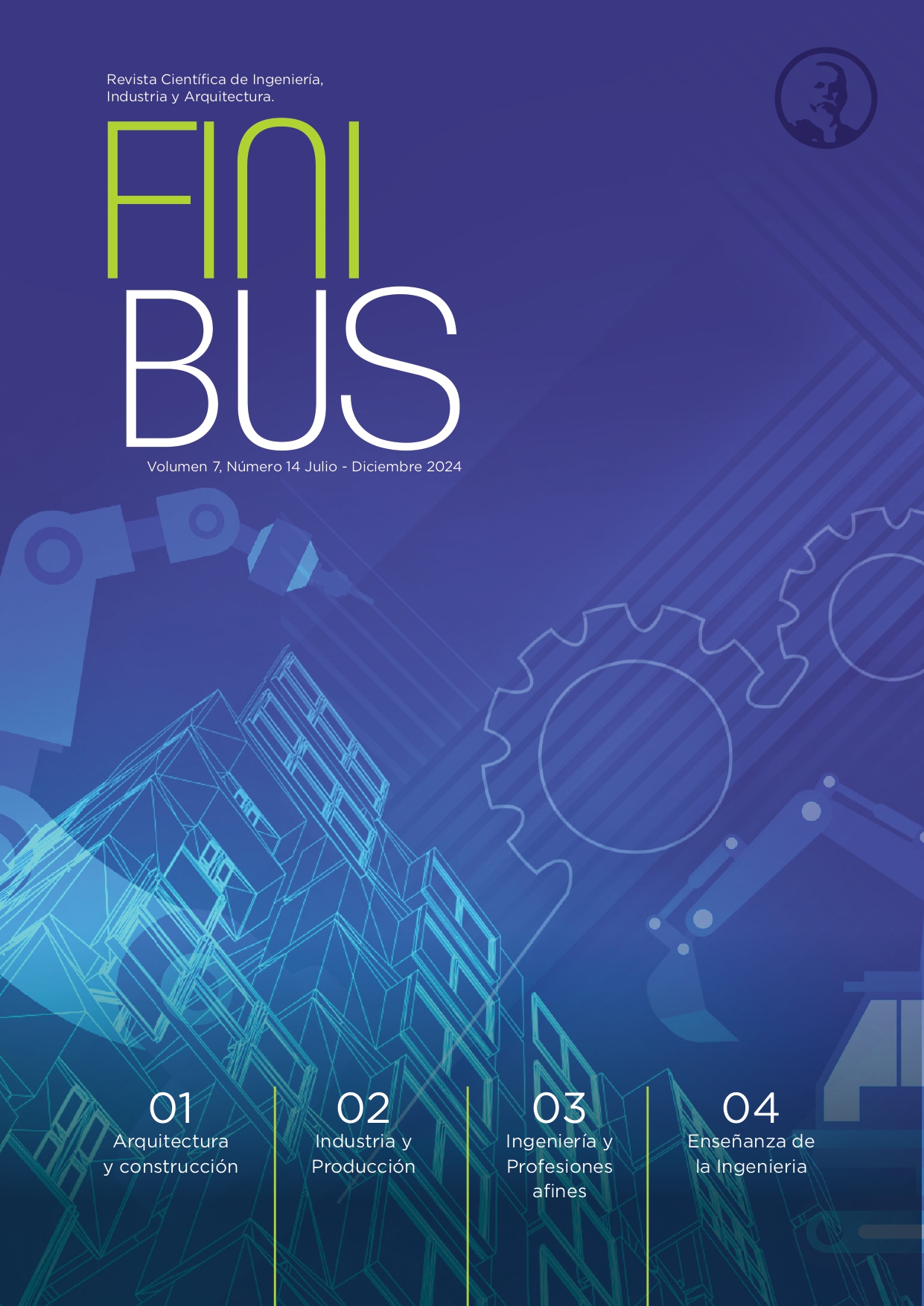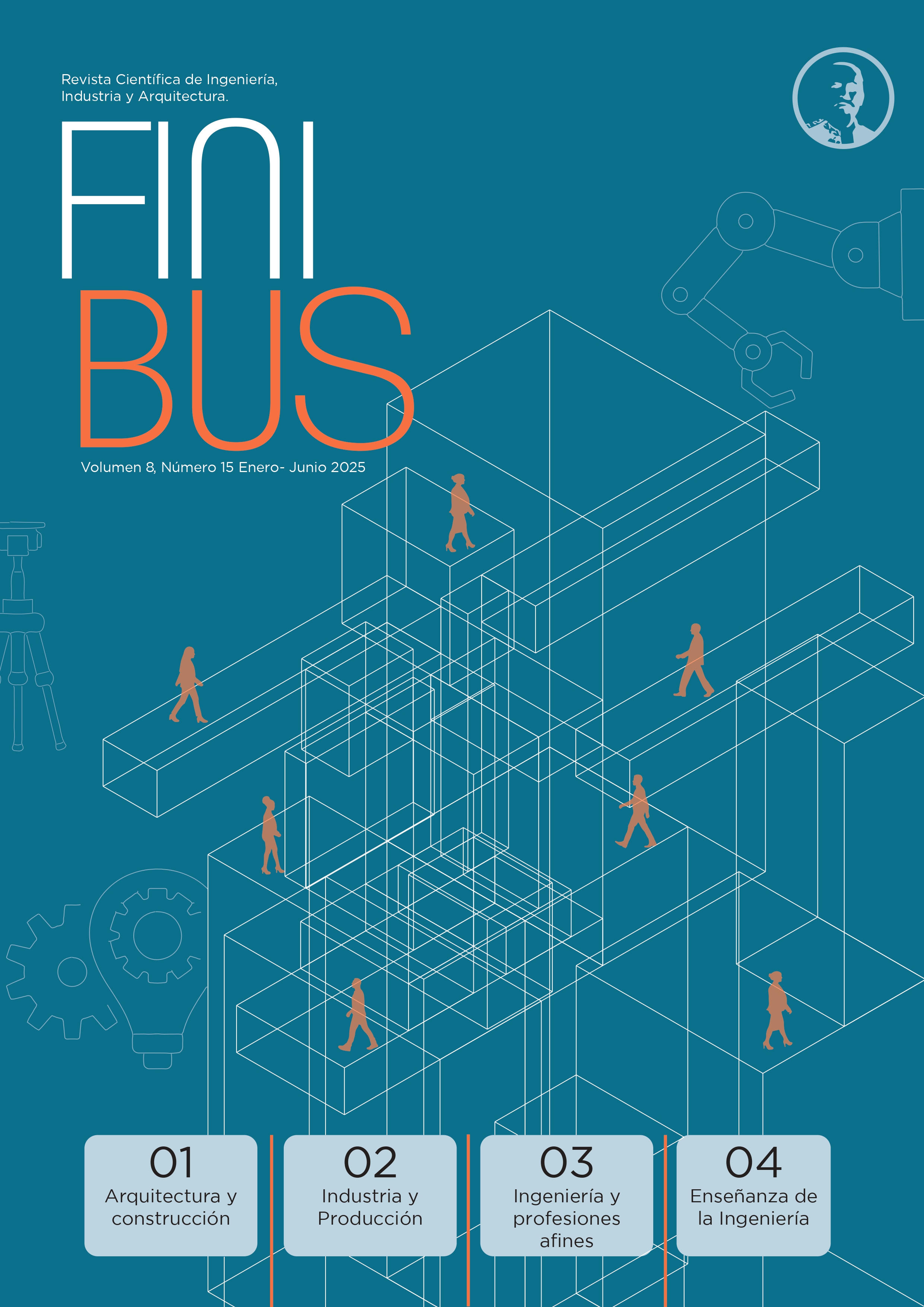Application of Artificial Neural Networks for Rainfall Estimation: Case Study in the Pastaza River Basin, Ecuador
Application of Artificial Neural Networks for Rainfall Estimation: Case Study in the Pastaza River Basin, Ecuador
DOI:
https://doi.org/10.56124/finibus.v7i14.013Keywords:
artificial neural networks, rainfall estimation, water management, pastaza river basinAbstract
The Pastaza River basin in Ecuador, crucial for its biodiversity and water management, faces significant challenges due to climate change. This study presents the application of artificial neural networks (ANN) to address deficiencies in pluviometric data for this basin. By implementing an optimised model with 5000 iterations, a 95% reliability in precipitation data estimation was achieved. Data from multiple meteorological stations were analysed, adjusting the model based on the distances between stations, demonstrating improved accuracy and coherence compared to traditional methods. The results highlight the ANN's capability to adapt to significant data variations, enhancing water management planning and mitigating the effects of extreme weather events through better precipitation prediction. The ability of ANN to process large volumes of data with complex interactions is particularly relevant in the hydrometeorological field, where spatial and temporal data variability is substantial. This advancement demonstrates the applicability of ANN in hydrology and climatology, contributing to the understanding of regional climate variability. The integration of advanced artificial intelligence techniques in the estimation and homogenisation of hydrological data provides a solid foundation for developing more effective adaptation and mitigation strategies in response to climate change. As technology evolves, new perspectives emerge for applying similar techniques in other river basins in the region, improving the management of water resources in Ecuador.
Downloads
References
Abadi, M., Barham, P., Sanjay Ghemawat, Irving, G., Isard, M., Kudlur, M., Levenberg, J., Monga, R., Moore, S., Murray, D. G., Steiner, B., Tuck-er, P., Vasudevan, V., Warden, P., Wicke, M., Yu, Y., Zheng, X., Google Brain, Chen, J., … Devin, M. (2016). TensorFlow: A System for Large-Scale Machine Learning. 12th USENIX Symposium on Operating Systems Design and Implementation, 265–283.
Abril-Saltos, R. V., Armas-Chugcho, P. A., Chamorro, W. P., Toscano-Salazar, V. E., Sucoshañay-Villalva, D. J., & Ríos-Rodríguez, A. F. (2021). Calidad de agua del río Puyo y afluentes, Pastaza, Ecuador. Tecnología y Ciencias Del Agua, 12(3), 379–417. https://doi.org/10.24850/j-tyca-2021-03-10
Carrera-Villacrés, D. V., Guevara-García, P. V., Tamayo-Bacacela, L. C., Balarezo-Aguilar, A. L., Narváez-Rivera, C. A., & Morocho-López, D. R. (2016). Relleno de series anuales de datos meteorológicos mediante métodos estadísticos en la zona costera e interandina del Ecuador, y cálculo de la precipitación media. Idesia (Arica), 34(3), 81–90. https://doi.org/10.4067/S0718-34292016000300010
Cartaya, S., Zurita, S., & Montalvo Párraga, V. (2016). Métodos de ajuste y homogenización de datos climáticos para determinar índice de humedad de Lang en la provincia de Manabí, Ecuador. Revista La Técnica, 94(106), 94–106.
Chollet, F. (2015). https://github.com/fchollet/keras. GitHub Repository. https://github.com/keras-team/keras
Cruzatty, C., Jimenez, D., Valencia, E., Zambrano, I., Mora, C., Luo, X., & Cando, E. (2021). A Case Study: Sediment Erosion in Francis Turbines Operated at the San Francisco Hydropower Plant in Ecuador. Energies, 15(1), 8. https://doi.org/10.3390/en15010008
Flores Llampazo, G., Honorio Coronado, E. N., del Aguila‐Pasquel, J., Cordova Oroche, C. J., Díaz Narvaez, A., Reyna Huaymacari, J., Grandez Ríos, J., Lawson, I. T., Hastie, A., Baird, A. J., & Baker, T. R. (2022). The presence of peat and variation in tree species composition are under different hydrological controls in Amazonian wetland forests. Hydrological Processes, 36(9). https://doi.org/10.1002/hyp.14690
Gómez Guerrero, J. S., & Aguayo Arias, M. I. (2019). Evaluación de desempeño de métodos de relleno de datos pluviométricos en dos zonas morfoestructurales del Centro Sur de Chile. Investigaciones Geográficas, 99. https://doi.org/10.14350/rig.59837
Goos, G., Hartmanis, J., Van, J., Board, L. E., Hutchison, D., Kanade, T., Kittler, J., Kleinberg, J. M., Kobsa, A., Mattern, F., Zurich, E., Mitchell, J. C., Naor, M., Nierstrasz, O., Steffen, B., Sudan, M., Terzopoulos, D., Tygar, D., & Weikum, G. (2012). Neural Information Processing (T. Huang, Z. Zeng, C. Li, & C. S. Leung, Eds.; Vol. 7666). Springer Berlin Heidelberg. https://doi.org/10.1007/978-3-642-34478-7
Goulven, P. (1988). Homogeneizacion de los datos pluviometricos. https://horizon.documentation.ird.fr/exl-doc/pleins_textes/divers11-03/010042844.pdf
Guachamin, W., Garcia, F., Arteaga, M., & Cadena, J. (2019). Determinación de Ecuaciones para el Cálculo de Intensidades Máximas de Precipitación (2nd ed., Vol. 2). INAMHI. https://www.inamhi.gob.ec/Publicaciones/Hidrologia/ESTUDIO_DE_INTENSIDADES_V_FINAL.pdf
Harris, C. R., Millman, K. J., van der Walt, S. J., Gommers, R., Virtanen, P., Cournapeau, D., Wieser, E., Taylor, J., Berg, S., Smith, N. J., Kern, R., Picus, M., Hoyer, S., van Kerkwijk, M. H., Brett, M., Haldane, A., del Río, J. F., Wiebe, M., Peterson, P., … Oliphant, T. E. (2020). Ar-ray programming with NumPy. Nature, 585(7825), 357–362. https://doi.org/10.1038/s41586-020-2649-2
Herrmann, P. (2002). Management Conflicts in the Ambato River Watershed, Tungurahua Province, Ecuador. Mountain Research and Develop-ment, 22(4), 338–340. https://doi.org/10.1659/0276-4741(2002)022[0338:MCITAR]2.0.CO;2
Houari, R., Bounceur, A., Tari, A. K., & Kecha, M. T. (2014). Handling missing data problems with sampling methods. Proceedings - 2014 International Conference on Advanced Networking Distributed Systems and Applications, INDS 2014, 99–104. https://doi.org/10.1109/INDS.2014.25
Hunter, J. D. (2007). Matplotlib: A 2D Graphics Environment. Computing in Science & Engineering, 9(3), 90–95. https://doi.org/10.1109/MCSE.2007.55
INHAMI. (2024). Anuarios Metereológicos. https://inamhi.website/anuarios-metereologicos/
Kalauzi, A., Cukic, M., Millán, H., Bonafoni, S., & Biondi, R. (2009). Comparison of fractal dimension oscillations and trends of rainfall data from Pastaza Province, Ecuador and Veneto, Italy. Atmospheric Research, 93(4), 673–679. https://doi.org/10.1016/j.atmosres.2009.02.007
Lee, H., & Kang, K. (2015). Interpolation of Missing Precipitation Data Using Kernel Estimations for Hydrologic Modeling. Advances in Meteor-ology, 2015, 1–12. https://doi.org/10.1155/2015/935868
López, S., & Sierra, R. (2010). Agricultural change in the Pastaza River Basin: A spatially explicit model of native Amazonian cultivation. Applied Geography, 30(3), 355–369. https://doi.org/10.1016/j.apgeog.2009.10.004
Matovelle, C., Heras, D., & Solano-Peláez, J. (2022). Eficiencia de la Imputación de Datos Faltantes de Precipitaciones Utilizando Herramientas Computacionales en la Cuenca Hidrográfica, Jubones - Ecuador. Revista Politécnica, 50(2), 23–30. https://doi.org/10.33333/rp.vol50n2.03
McKinney, W. (2010). Data Structures for Statistical Computing in Python. 56–61. https://doi.org/10.25080/Majora-92bf1922-00a
Millán, H., Kalauzi, A., Cukic, M., & Biondi, R. (2010). Nonlinear dynamics of meteorological variables: multifractality and chaotic invariants in daily records from Pastaza, Ecuador. Theoretical and Applied Climatology, 102(1–2), 75–85. https://doi.org/10.1007/s00704-009-0242-6
Millán, H., Kalauzi, A., Llerena, G., Sucoshañay, J., & Piedra, D. (2008). Climatic trends in the Amazonian area of Ecuador: Classical and mul-tifractal analyses. Atmospheric Research, 88(3–4), 355–366. https://doi.org/10.1016/j.atmosres.2007.11.030
Najarchi, M., Mahdavi, A., Hazaveh, E., Hazaveh, S. M. M. H., & Najafizadeh, S. M. M. (2020). Determination of missing precipitation data by various methodologies. In Journal of Critical Reviews (Vol. 7, Issue 6, pp. 925–935). Innovare Academics Sciences Pvt. Ltd. https://doi.org/10.31838/jcr.07.06.161
Pedregosa, F., Varoquaux, G., Gramfort, A., Michel, V., Thirion, B., Grisel, O., Blondel, M., Prettenhofer, P., Weiss, R., Dubourg, V., Passos, A., Cournapeau, D., Brucher, M., Perrot, M., & Duchesnay, É. (2011). Scikit-learn: Machine Learning in Python. Journal of Machine Learning Research, 12, 2825–2830. https://doi.org/10.48550/arXiv.1201.0490
Serrano-Vincenti, S., Condom, T., Campozano, L., Escobar, L. A., Walpersdorf, A., Carchipulla-Morales, D., & Villacís, M. (2022). Harmonic Analysis of the Relationship between GNSS Precipitable Water Vapor and Heavy Rainfall over the Northwest Equatorial Coast, Andes, and Amazon Regions. Atmosphere, 13(11), 1809. https://doi.org/10.3390/atmos13111809
Siren, A. (2014). History of natural resource use and environmental impacts in an interfluvial upland forest area in western Amazonia. Fennia - International Journal of Geography, 192(1), 36–53. https://doi.org/10.11143/8825
Van Rossum, G. (1995). Python tutorial.
Waskom, M. (2021). seaborn: statistical data visualization. Journal of Open-Source Software, 6(60), 3021. https://doi.org/10.21105/joss.03021
Published
How to Cite
Issue
Section
License
Copyright (c) 2024 Revista Científica y Arbitrada del Observatorio Territorial, Artes y Arquitectura: FINIBUS - ISSN: 2737-6451.

This work is licensed under a Creative Commons Attribution-NonCommercial-ShareAlike 4.0 International License.
















